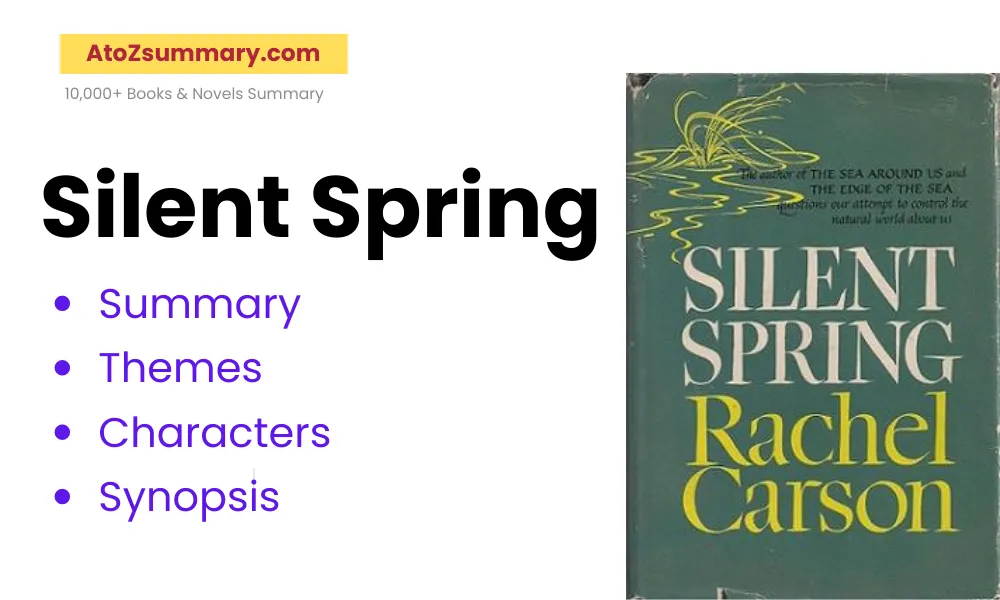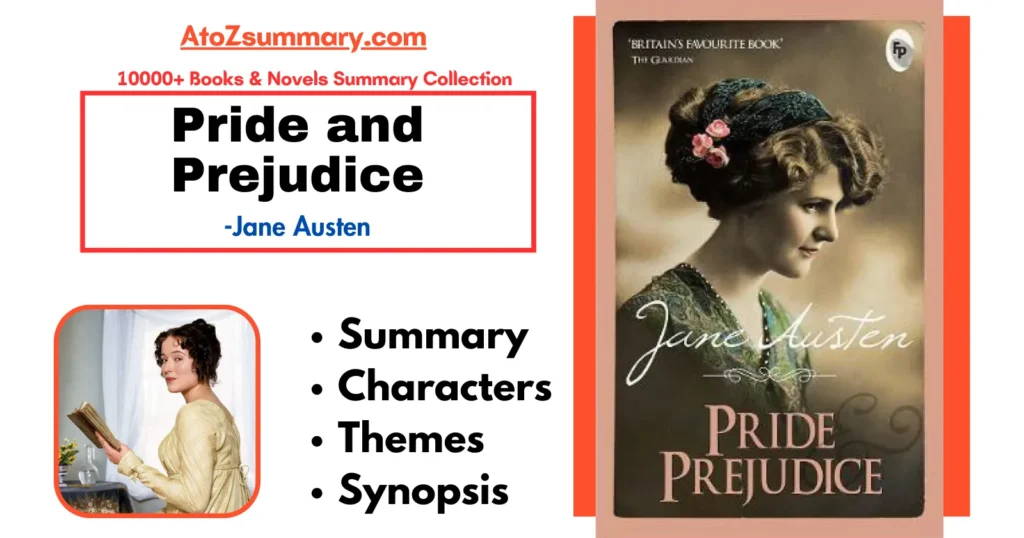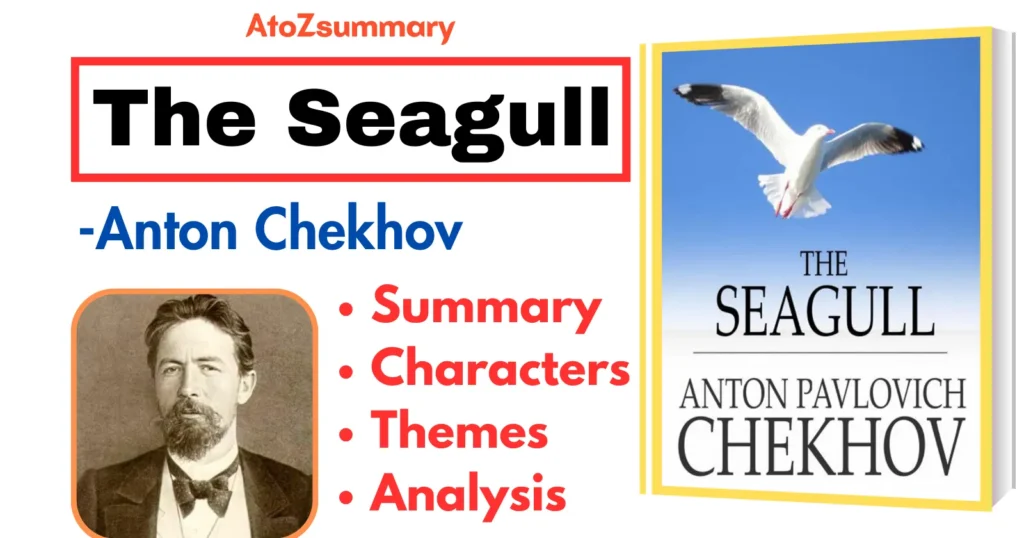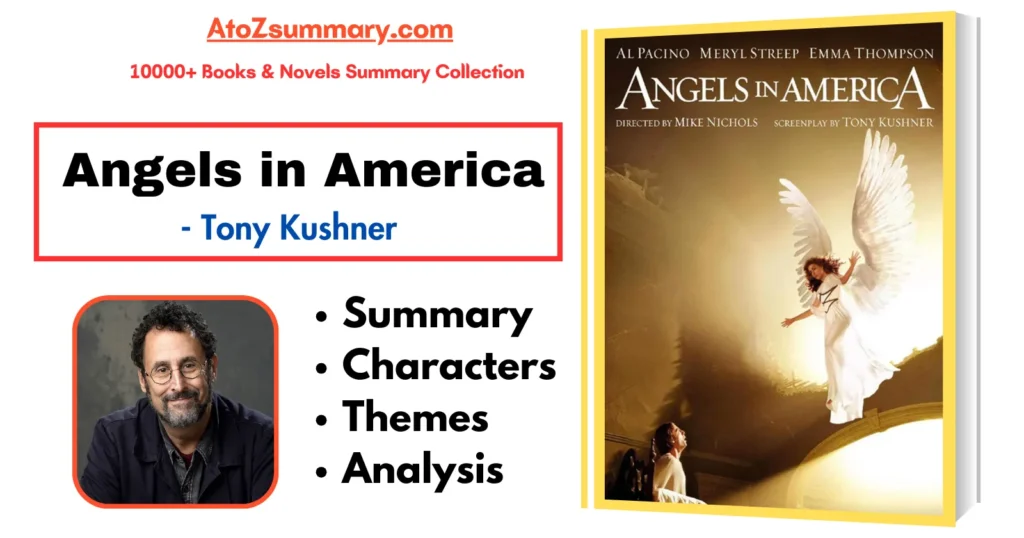| Detail | Information |
|---|---|
| Title | Silent Spring |
| Author | Rachel Carson (1907–1964) |
| Publication Year | 1962 |
| Genre | Environmental science, Non-fiction |
| Main Themes | Environmentalism, Conservation, Health Impacts, Ecological Balance |
Silent Spring Characters
- Rachel Carson – The author of the book, a marine biologist, and conservationist. She brings attention to the dangers of pesticides on the environment and human health.
- Chemical Companies – Represented by various corporations that produce and promote the use of pesticides, sometimes at the expense of environmental safety.
- Birds and Wildlife – Silent Spring highlights the impact of pesticides, especially DDT, on various animal species, particularly birds like eagles and robins.
- Government Officials – Carson criticizes government agencies for not regulating pesticides effectively and for sometimes being influenced by the chemical industry.
- Farmers – The book discusses the implications of pesticide use on farmers’ health, as well as the development of pesticide-resistant insects.
Silent Spring Themes
The themes of the story are:
- Environmental Awareness – The book raises awareness about the detrimental effects of indiscriminate pesticide use on the environment, particularly on birds, aquatic life, and overall ecosystem health.
- Ecological Interdependence – Carson emphasizes the intricate connections between various species and the delicate balance of ecosystems. She highlights how disrupting one aspect of nature can have far-reaching consequences.
- Human Health and Technology – The book explores the potential risks of chemical pesticides to human health, challenging the prevailing belief that technology and chemical solutions always lead to progress and safety.
- Corporate Interests vs. Public Welfare – Carson examines the influence of powerful industries on government policies and regulations, illustrating the tension between economic interests and the need to protect public and environmental health.
- Responsibility and Advocacy – “Silent Spring” encourages readers to take responsibility for the environment and advocates for the use of science, informed decision-making, and public action to safeguard the natural world from harmful practices.
Watch the full book summary “Silent Spring“
Silent Spring Synopsis
Silent Spring by Rachel Carson is a groundbreaking environmental book that raises awareness about the dangers of widespread pesticide use, particularly DDT.
Published in 1962, the book highlights how these chemicals have devastating impacts on ecosystems, wildlife and human health.
Carson meticulously presents scientific evidence and case studies to reveal the interconnectedness of nature and the dangers of disrupting it.
The title “Silent Spring” symbolizes a world where pesticides have decimated bird populations and silenced their once vibrant songs.
The book played a pivotal role in sparking the modern environmental movement and advocating for greater caution in using chemicals that harm the environment.
Silent Spring Summary
The author begins by portraying a perfect American village, complete with lush flora and a plethora of plants and fruits. Suddenly, a fine white powder falls from the sky & everything starts to die within days: plants, bees, young animals & even the rivers are infected.
In recent years, mankind has evolved the ability and capability to modify the environment via the use of chemicals and technological breakthroughs. This was not always to man’s advantage, as the long-term effects of pesticides & other pollutants on nature are not completely known. Until recently, nature & the environment had ample time to adjust to the introduction of new dangers, but because civilization developed them at such a rapid pace, nature did not have the opportunity to adapt.
Each year, thousands of new poisons are developed, and even though they are expressly meant to harm one animal or bug species, they also damage other creatures. Because the government & farmers tend to exaggerate insect issues, more dangerous pesticides are marketed each year. Worse, the insecticides failed to kill the bugs they were designed to target in the first place. A lack of diversity in farming can also cause issues by making the crop more susceptible to pests and diseases.
Another issue is that new kinds of creatures such as insects have been mistakenly brought into habitats where they are not native. Animal and bug species thrived in the new habitat since they had no natural predators, causing even more devastation.
Following the end of World War II, humanity began creating more and more pesticides, and from that point forward, every living thing was exposed to pesticides in some form. Arsenic is said to be one of the earliest pesticides, dating back to the Renaissance. Arsenic, on the other hand, is far from innocuous and has been demonstrated to be a carcinogen.
DDT, a chemical deemed harmless when in powder form, was one of the most often used insecticides in modern times. The human body, on the other hand, accumulates DDT in its fat cells and then releases it over time, harming the body. The material is easily transported, and it may quickly travel from plants to animals to people. It was also demonstrated that women may convey DDT to their offspring while they are still in pregnancy or through breast milk.
Pesticides carried by air are considerably more toxic, and many persons who participated in spraying the chemicals died as a result of being exposed to the hazardous poisons. Endrin is another drug that has been utilized, and many children and household pets have perished after coming into touch with surfaces that have been treated with Enderin by the adults in the house.
Unwanted outcomes arise when a person is exposed to two separate substances, and the chemicals react aggressively in the carrier’s body over time. This can have major uncontrollable adverse effects, which frequently result in deadly accidents.
However, pesticides aren’t the only harmful compounds named; herbicides are also highlighted. They are prohibited in certain nations, but farmers in the United States are free to use them as they see appropriate.
Another issue is that rivers and various other sources of water got sick as well, and chemicals were discovered in the water even eight years after the region was no longer chemically treated. Bird species have vanished entirely from specific locations after eating diseased fish and dying over time. Worse, the toxins were then passed on to people, who were also afflicted by the pollutants in the water.
The soil and other creatures in the soil that break down biological and vegetative debris into nutrients have been damaged as well. The poisons employed sometimes have the opposite impact than the farmers intended, and in other cases, the species afflicted were not those regarded as pests, but those that preyed on them and helped manage them.
Farmers employ a restricted number of cultivated plants, and those they deem ineffective are eliminated. The book discusses sagebrush in the West as well as how farmers attempted to remove it. What the farmers didn’t comprehend was that some animals and birds relied on sagebrush for food & refuge, and when sagebrush was removed from places, those animal species vanished. Herbicides damage other plants in the process, and they can even harm cattle that consume those plants.
Carson contends that introducing natural predators from other nations would be a superior choice for controlling unwanted species. This would result in less pollution and fewer toxic substances affecting people’s plants and animals.
In 1959, the Midwest was sprayed with Aldrin to fight a pest issue, but the amount used was so large that the chemical collected on rooftops was like snow. Soon after, dogs began to die, birds vanished, and humans began to exhibit indications of chemical poisoning. Despite this, the chemical was reapplied, resulting in catastrophic animal losses. Ironically, the Japanese beetles were exterminated considerably faster and with less harm in other sections of the nation where pesticides were not utilized.
In certain locations, robins were the most impacted bird species, with about 90% of the robin population dying while DDT was used as a pesticide. The eagle had been in danger & the total number of eagles plummeted dramatically. The birds were harmed because their reproductive system was targeted, and they were unable to breed.
The trout and salmon in the rivers have also been harmed since DDT destroyed the larvae & other organisms that the fish ate. This occurred in 1954 in Canada, in 1955 in Maine, British Columbia, the state of Alabama, the Philippines, the Colorado River in 1961 & the Indian River in 1955.
Some fish species became extinct in some rivers & the contaminated fish made their way to the seas, where they infected other huge fish such as sharks. Because any chemical, in some way or another, may eventually reach a water source and subsequently be transferred into rivers, streams, and other bodies of water, fish were particularly affected. Fish are considered to be less powerful than other animals, and they lack the same tolerance to manmade poisons as mammals possess. Some fish species have been entirely exterminated in certain regions of the world as a result of pesticides and herbicides affecting the fish population.
Some pests arose in specific places as a result of inadvertent introductions by foreign visitors or the introduction of new crops that were not native to the area. This was the situation with the gipsy moth & fire ant, which arrived in the United States around the end of the 1860s. The government attempted to exterminate the bugs with DDT but was ineffective, and cows were harmed as a result.
Chemicals can be purchased in every store, making it difficult to evaluate the extent to which the general population was exposed to chemicals. There is no clear way to assess an acceptable level of chemicals in the population’s regular food, and the state has no control over the number of herbicides and pesticides that wind up in the fields each year.
If society was concerned about how smallpox and other diseases harmed the population 100 years ago, the largest threat now is the unrestricted use of pesticides & herbicides. The reality that humans are subjected to several chemicals exacerbates the problem since it is difficult to predict how two chemicals will react with one another.
Pesticides are known to disturb the oxidation process, which affects the neurological system, the liver, and the mechanism that creates energy in the human body. Chemicals in the human body may potentially produce mutations that are harmful to an unborn child, mutations that would occur naturally only once every few hundred years.
It is also argued that the increased usage of pesticides and herbicides is to blame for the fast-increasing number of cancer cases. Cancer is no longer just seen in adults; it is also present in youngsters. What was once an illness connected with specific occupations has now become unavoidable. Although pesticide exposure has been linked to leukaemia, Carson remains optimistic, arguing that just as we put these things into our lives, we can also eradicate them. Carson concludes her book by stating that Mother Nature is more than capable of managing animal populations and that all humans need to do is let nature take its course.
Silent spring important points
- Silent Spring is a book by Rachel Carson.
- It talked about harmful chemicals called pesticides hurting nature.
- Pesticides were killing birds, bees, and other animals.
- People started caring more about the environment after reading it.
- The book helped start the environmental movement.
- It led to better laws and ways to protect nature.
Silent Spring FAQs
Who wrote silent spring?
Rachel Carson wrote Silent Spring.
What is the main idea of Silent Spring?
Silent Spring warns about the harmful effects of pesticides on the environment and human health, advocating for ecological awareness and responsible use of chemicals.
What is the conclusion of Silent Spring?
Silent Spring concludes that unregulated pesticide use harms ecosystems, wildlife, and humans. It calls for responsible science-based regulation to protect the environment and human health.










![The Catcher In The Rye Summary, Themes & Characters [by J. D. Salinger] The Catcher In The Rye Summary, Themes & Characters [by J. D. Salinger]](https://atozsummary.com/wp-content/uploads/2023/06/The-Catcher-In-The-Rye-Summary-Themes-Characters-by-J.-D.-Salinger.webp)
